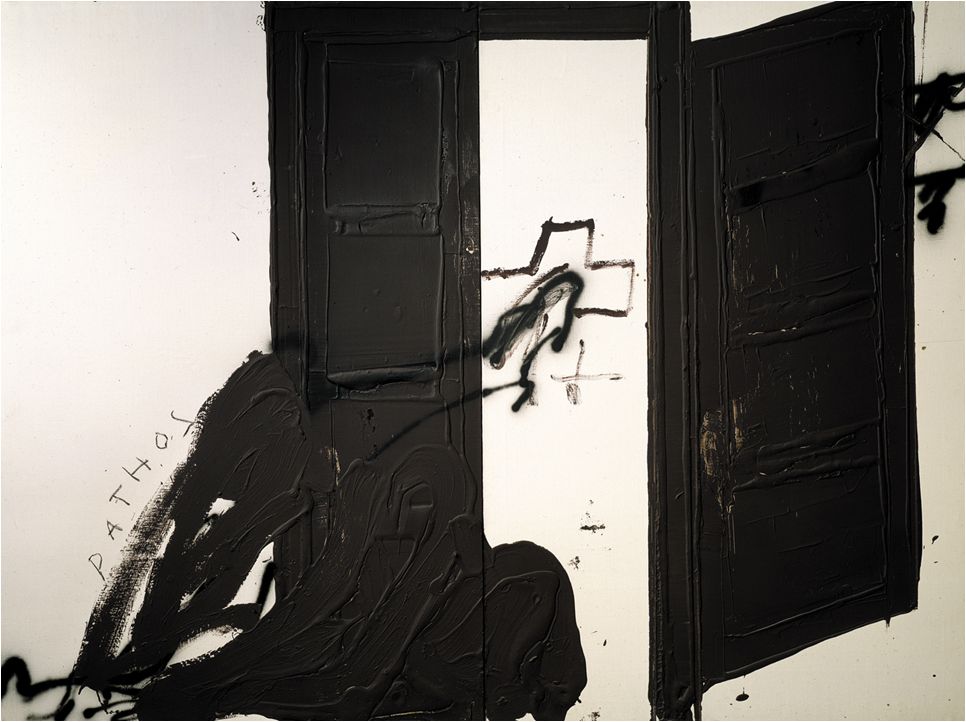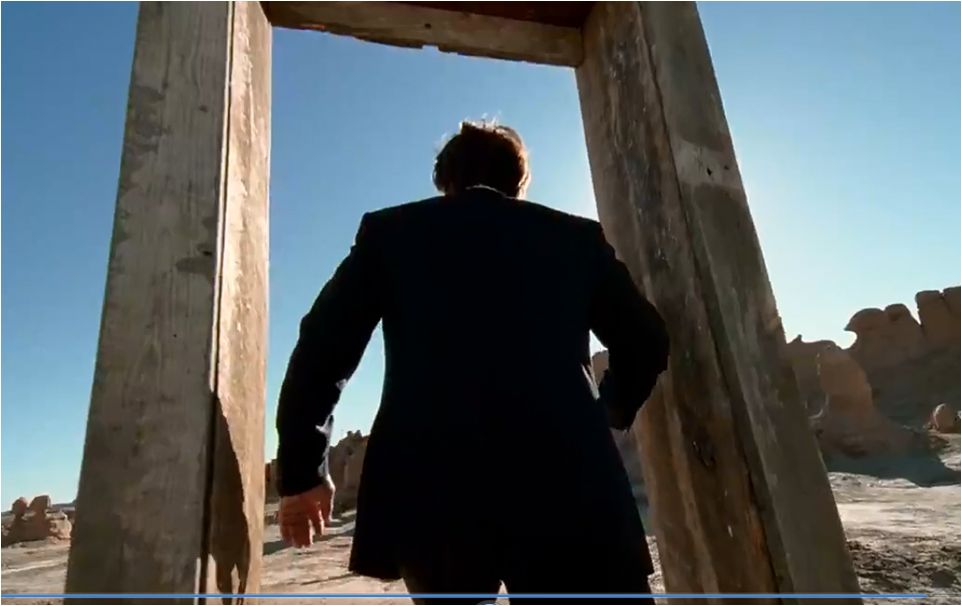
THE DOOR

Tapies, Pathos, 1988
“Things became duplicated in Tlön;
they also tend to become effaced and lose their details when they are
forgotten. A classic example is the doorway which survived so long as it was
visited by a beggar and disappeared at his death.”
Jorge Luis Borges, Tlön, Uqbar, Orbis Tertius , 1940.
HERMES
AND THE DOOR
“The
position of the Herm at the entrance - whether in the yard or on the road -is
that of the mediator. Hermes' connection to the center of the house, to the
Goddess of the hearth, is attested by a Homeric Hymn to Hestia (XXIX). Every
now and then he appears in this "innermost nook": Kallimachos tells
how, blackened by smoke, he bounds up from there to frighten divine maidens
(Hymn. 3, 69). Those "innermost nooks" include the bridal chamber and
bedroom, and there, according to a tradition from Euboia, Hermes rules as
Epithalamites. The Kabeirian guide of souls is at work both within the house
and without. He guides souls out of his realm - the world of paths and
roads-back into the warm life of the household, which in Greek signifies the
"family." In his official capacity as mediator between the worlds of
night and day, spirits and men, and (standing before the temple) between the
worlds of Gods and mankind, he is called Proopylaios ("before the
gate") and Pylaios ("before or at the gate"). This is not only
because a thief is the best doorkeeper! One inscription names him Pylaios ("the
one at the entrance") and Harmateus ("driver of the chariot").
Two other epithets - strophaios ("standing at the door-post," also
"cunning," "versatile") and stropheus (the
"socket" in which the pivot of the door moves) - show him closely
related to door hinges and therefore to the entrance, but also to a middle point,
to the socket, about which revolves the most decisive issue, namely the
alternation life-death-life.”
Karl Kerenyi, Hermes.
 In Terence Malik's film, The Tree of Life, we see the archetype of The Door, aloowing entry to ancestral space.
In Terence Malik's film, The Tree of Life, we see the archetype of The Door, aloowing entry to ancestral space. 
